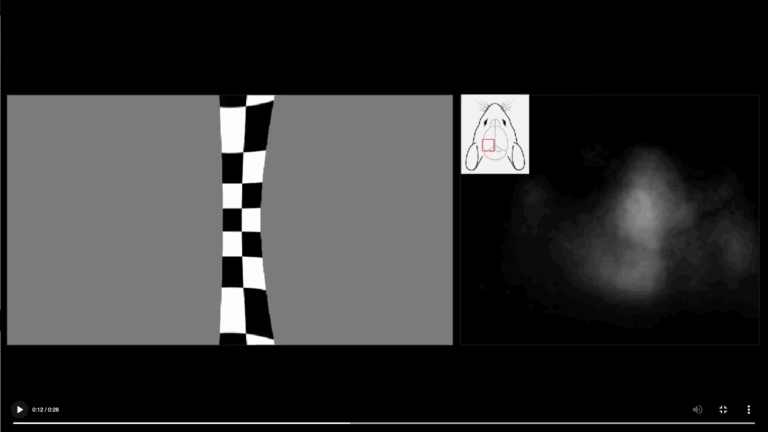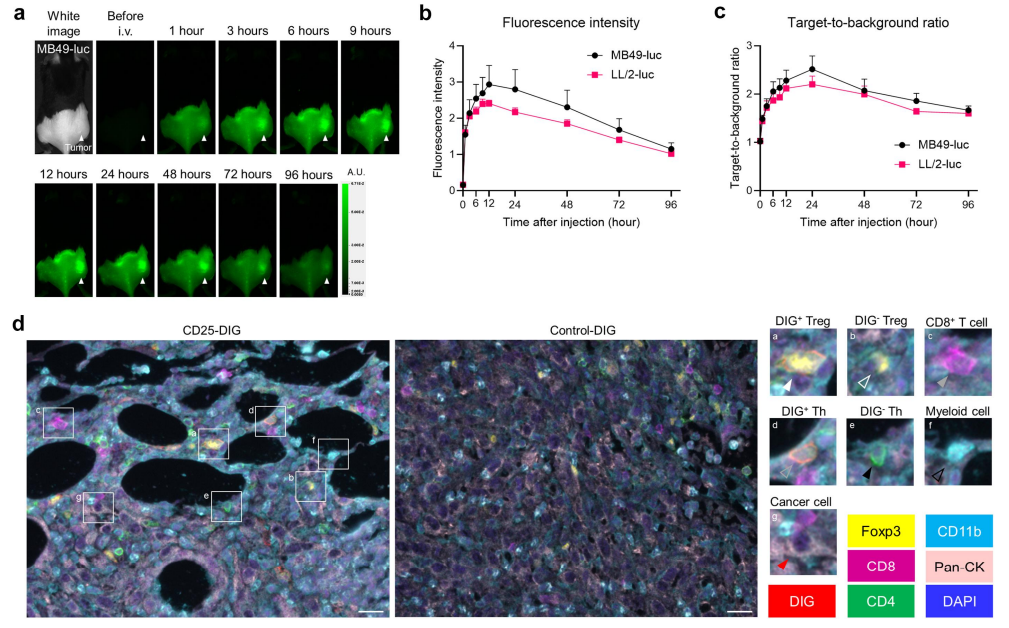
Exploring the Functional Organization of the Mouse Visual Cortex with Retinotopic Mapping
The visual system of mammals is organized so that each section of the visual field is processed by a corresponding region of the brain. This


A recent study by Kobayashi et al. has shed new light on the potential of combining near-infrared duocarmycin photorelease (NIR-DPR) with PD-1 blockade to improve cancer treatment outcomes. At the heart of this groundbreaking research is MediLumine’s PRISM imaging system, which played a crucial role in uncovering these new insights.
Regulatory T cells (Tregs) are key players in the tumor microenvironment, known for their ability to mediate immunosuppression and hinder the effectiveness of PD-1 blockade immunotherapy. While targeting Tregs presents a promising therapeutic strategy, systemic depletion of these cells can lead to severe autoimmune side effects. This has posed a significant challenge for researchers aiming to develop Treg-directed therapies.
The study introduces a novel approach to selectively target Tregs within the tumor microenvironment using CD25-targeted NIR-DPR. This technology involves the use of anti-CD25 F(ab’)2 conjugates that specifically uncage duocarmycin in CD25-expressing cells upon exposure to NIR light. The result is a localized and predominant damage to Tregs, sparing other immune cells and reducing the risk of autoimmune complications.
The PRISM’s Imaging System was used to visualize the biodistribution of CD25-CyPeg-Duo in vivo and monitor tumor growth with bioluminescent imaging of the luciferase reporter. Here are more details the PRISM In Vivo Imaging system was used:
Full Citation:
Hiroshi Fukushima, Aki Furusawa, Seiichiro Takao, Ebaston Thankarajan, Michael P Luciano, Syed Muhammad Usama, Makoto Kano, Shuhei Okuyama, Hiroshi Yamamoto, Motofumi Suzuki, Miyu Kano, Peter L Choyke, Martin J Schnermann & Hisataka Kobayashi (2024) Near-infrared duocarmycin photorelease from a Treg-targeted antibody-drug conjugate improves efficacy of PD-1 blockade in syngeneic murine tumor models, OncoImmunology, 13:1, DOI: 10.1080/2162402X.2024.2370544

The visual system of mammals is organized so that each section of the visual field is processed by a corresponding region of the brain. This

MediLumine is pleased to announce a new distribution partnership with Braintree Scientific, a company recognized for its long-standing contribution to life science research. This collaboration